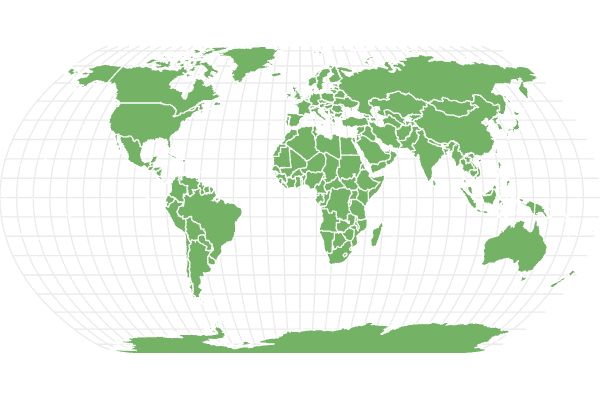Can survive eating a single fish for months
Advertisement
Colossal Squid Scientific Classification
- Kingdom
- Animalia
- Phylum
- Mollusca
- Class
- Cephalopoda
- Order
- Oegopsida
- Family
- Cranchiidae
- Genus
- Mesonychoteuthis
- Scientific Name
- Mesonychoteuthis hamiltoni
Read our Complete Guide to Classification of Animals.
Colossal Squid Conservation Status
Colossal Squid Facts
- Prey
- Fish, squid
- Fun Fact
- Can survive eating a single fish for months
- Biggest Threat
- Natural predators
- Most Distinctive Feature
- Massive size
- Other Name(s)
- Antarctic squid, giant cranch squid
- Habitat
- ocean
- Predators
- Sperm whales
- Diet
- Carnivore
- Lifestyle
- Solitary
- Favorite Food
- Fish, squid
- Type
- Cephalopod
- Common Name
- Colossal squid
View all of the Colossal Squid images!
The Colossal Squid is the largest invertebrate on the planet!
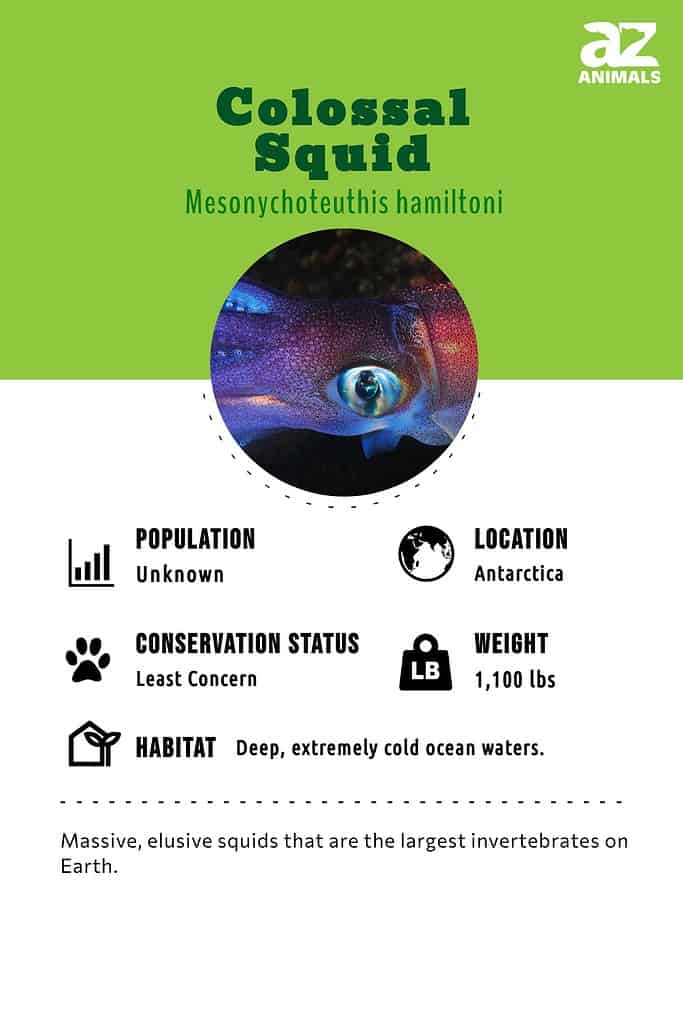
Colossal squids are a lot like other squid species when it comes to the details of their anatomy, including basic body structure with fins and mantle. However, they are distinguished by their massive size and consistent ability to elude comprehensive research. Their preference for extreme depth in the waters surrounding Antarctica has made them a difficult study and only a few specimens have been obtained to date. Despite limited information, scientists have good reason to believe that this squid species holds several records in the animal kingdom, including that of the largest invertebrate on the planet.
3 Incredible Colossal Squid Facts!
- Record Eye Size: Colossal squids have the biggest eyes recorded in the entire animal kingdom with diameters of up to 16 inches.
- Biggest Invertebrate: These squids also hold the record of the most massive invertebrate with weights reaching well over 1000 pounds.
- Doughnut Brain: The brain of the colossal squid is shaped like a ring around the tube that leads from the beak to the animal’s digestive system.
Classification and Scientific Name

This Colossal Squid is preserved in Wellington’s Te Papa Museum
The colossal squid is also known as the Antarctic squid, due to its native range, or the giant cranch squid, which is not to be confused with the better-known giant squid. The scientific name for the animal is Mesonychoteuthis hamiltoni. The genus Mesonychoteuthis derives its name from a combination of three Greek words that mean “middle,” “claw” and “squid.” The species is a member of the Cranchiidae family, along with about 60 other squid species, and is in the Cephalopoda class.
Evolution
Colossal squids have consistently remained shrouded in mystery, even as discoveries of living specimens of giant squids came to light for the first time in 2004, no such breakthroughs have been made in regards to their Antarctic counterparts.
While they may appear similar to giant squids, colossal squids are not actually closely related but instead are an example of convergent evolution. The large size of the colossal squid is due to a phenomenon known as polar gigantism, wherein creatures who live close to the north and south poles exhibit massive body sizes in relation to their non-polar relatives. This is theorized to be due to the abundance of oxygen in polar regions enabling extremely high-functioning metabolisms.
Like all cephalopods besides the nautilus, the colossal squid’s body contains internalized evidence of the protective shells these creatures once all had in common. In the case of these massive mollusks, it is a bony structure called the feather or pen.
Appearance

The colossal squid has massive eyes used to discern their prey in the dark abyss they call home.
©Rui Palma/Shutterstock.com
Like many other related species, the colossal squid has a head, mantle, a collection of eight arms, and a pair of long tentacles. The body is conical in shape with eyes and mouth concentrated on the front end of the animal immediately before the beak, arms, and tentacles. The fins are essentially two broad, thin flaps at the tip of the mantle that provide passive locomotion through the water.
While the bodies of these squids are actually shorter than those of the giant squid, they are typically much bulkier and heavier. The largest living colossal squid captured so far measured 1,091 pounds and experts believe that mature adults could reach weights up to 1,500 pounds or more. Their bodies and tentacles have a uniform pinkish color when the animals are healthy.
Even though the squids have eight roughly symmetrical arms, they aren’t all the same exact length. In fact, all of them can be slightly different ranging from 0.85 to 1.15 meters long. The two tentacles are typically at least twice as long as the arms. The colossal squid differs from other species in its class because of a series of rotating hooks on the broad “clubs” at the end of each tentacle.
Distribution, Population, and Habitat
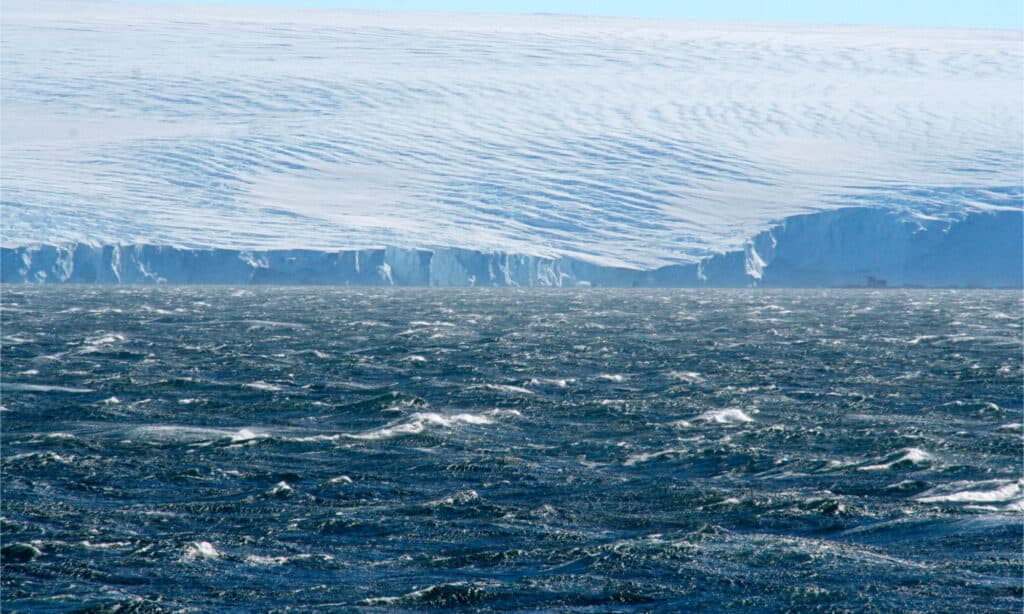
Colossal Squids are native to the cold waters around Antarctica.
©ENVIROSENSE/Shutterstock.com
As one of the more mysterious sea animals known to the scientific community, there is little known about the current population density. However, it is currently classified as a species of least concern. These squids are strictly salt-water creatures that have only been discovered in the waters surrounding Antarctica in circumpolar currents in both the Atlantic and Pacific. Juveniles can be found ranging in waters up to 1000 meters deep, while mature adults are much more difficult to study as they tend to plummet to much greater depths that could exceed 2200 meters.
Predators and Prey
What do colossal squids eat?
The rarity of observation and capture of mature specimens means there is still a lot of unknowns about the various prey and predator species of the colossal squid. Despite their massive weight and sizable beak they actually have very slow metabolisms due to the frigid waters they inhabit, which means they don’t need to eat much. Patagonian and Antarctic toothfish are thought to be primary prey targets along with other types of fish and smaller squid species.
What animals eat colossal squids?
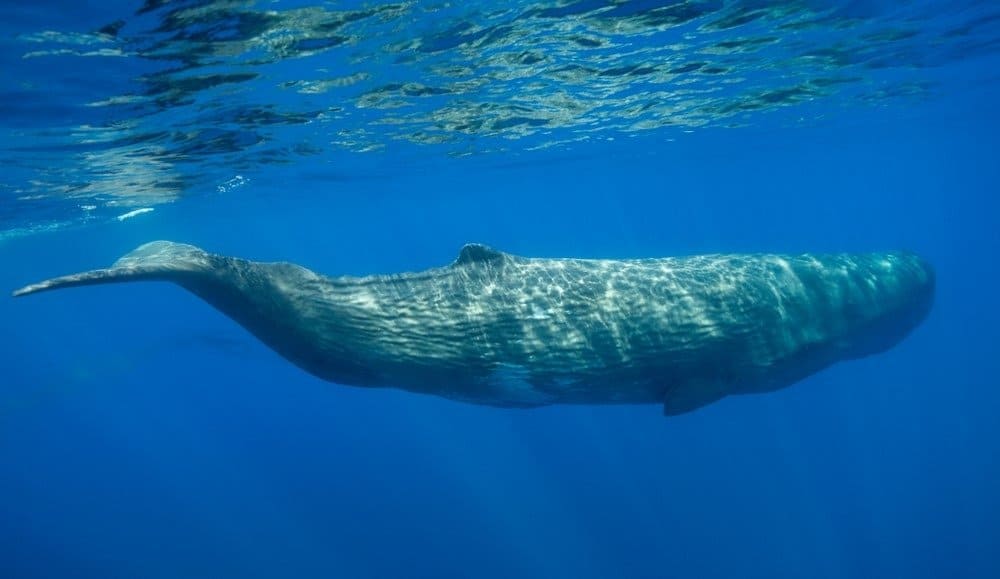
Sperm whales are the only predators large enough to contend with colossal squids.
©wildestanimal/Shutterstock.com
Even though they are massive and have the ability to cause significant damage with their hooked tentacles, these massive invertebrates are actually prey as well as predator. Researchers believe they are a primary food source for sperm whales that frequent the same waters. In fact, the discovery of colossal squid beaks and other parts in the stomach of sperm whales has provided key insight into the size, shape, and habitat of adult squids.
Reproduction and Lifespan
Since no fully mature squids have been observed in their native environment, the details of their breeding and reproduction process are still uncertain. However, they are considered gonochoric like other members of the Cephalopoda class, which means they die shortly after mating and breeding. Adult males likely fertilize females through direct contact after performing a display to win her approval.
The general life cycle is thought to follow the same pattern as related species, but the details are unknown. Baby squids are thought to be released in warmer, shallow waters and begin ranging into greater depths as they mature.
Colossal Squid in Fishing and Cooking
Their relatively recent discovery and lack of accessibility mean colossal squid have virtually no known applications in fishing or cooking. They have been seen and caught by fishing vessels that are pursuing other fish that happen to be a current prey of a squid. Toothfish caught in the oceans around Antarctica occasionally show signs of damage from the hooks of colossal squid tentacles.
Population
Population numbers are uncertain, although the frequency of materials found in the stomach of sperm whales leads scientists to believe there is a healthy number of animals in deeper waters. There is currently no restriction on hunting and fishing these animals or concern over the viability of their population.
Giant Squid vs. Colossal Squid
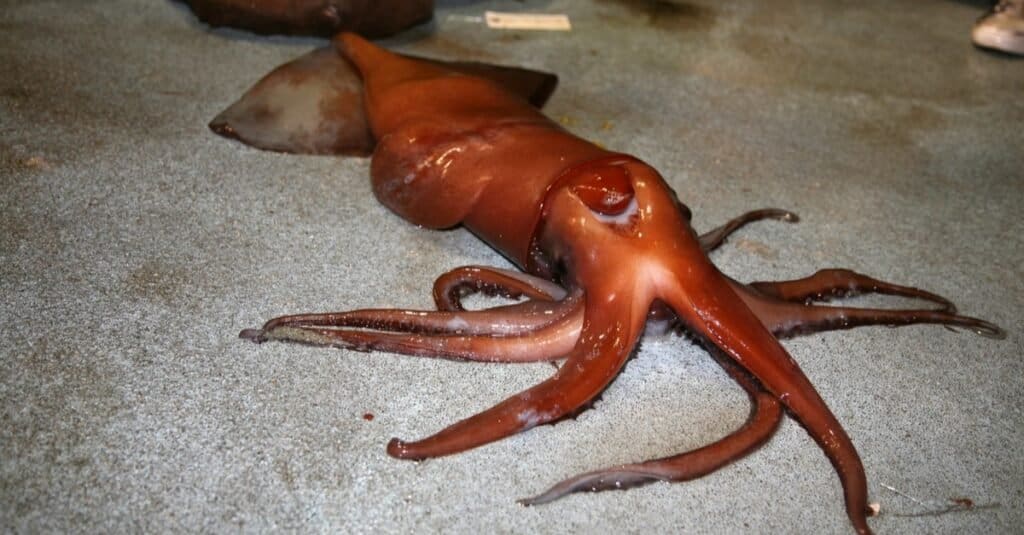
Colossal squids can weigh twice as much as a giant squid.
©mikeledray/Shutterstock.com
Due to the similarity in name, taxonomy, and anatomy, giant and colossal squids are easily confused. Colossal squids have slightly shorter bodies, but much greater weight than the giant. The colossal species also has prominent hooks on its tentacles.
Read more about their differences in this article: Giant Squid vs Colossal Squid: What’s the Difference?
View all 235 animals that start with CColossal Squid FAQs (Frequently Asked Questions)
Where are colossal squid found?
The colossal squid is found in deep marine environments in the waters around Antarctica. They’ve been reported in both Atlantic and Pacific oceans with sightings around New Zealand, South Africa, and in open waters. Adults can go thousands of feet below the surface of the water, which makes them challenging to observe, capture, or study.
How big is a colossal squid?
Adult squids can reach a total length of up to 14 meters (46 feet) including their tentacles. Their weight ranges with size and age, with adults thought to measure about 1000 to 1500 pounds.
What does colossal squid eat?
Colossal squids prey on fish as well as other smaller animals found in their environment. Several species of toothfish are a known favorite and scientists believe they may also eat other smaller squids. Despite their massive size, they actually consume small amounts of food due to their incredibly slow metabolic rate.
Where does the colossal squid live?
These squids live in the open ocean in the circumpolar current around Antarctica. Younger squids may stick closer to shore and live closer to the surface of the water at depths of less than 1000 meters.
Which is bigger, a giant squid or a colossal squid?
Giant squids can have longer bodies than colossal squids, but colossal squids have greater mass. In fact, grown adults can weigh almost twice as much as giant squids of comparable maturity.
Are colossal squid dangerous?
Due to the infrequency of encounters with humans and the very low potential for interaction, colossal squids are not considered a threat to humans.
What Kingdom do Colossal Squid belong to?
Colossal Squid belong to the Kingdom Animalia.
How do Colossal Squid have babies?
Colossal Squid lay eggs.
What are the differences between a colossal squid and a sperm whale?
The greatest differences between a colossal squid and a sperm whale are their size, range, and morphology.
Thank you for reading! Have some feedback for us? Contact the AZ Animals editorial team.
Sources
- Museum of New Zealand / Accessed November 19, 2020
- TONMO / Accessed November 19, 2020
- Animal Diversity Web / Accessed November 19, 2020
- Sea Life Base / Accessed November 19, 2020
- Oceana / Accessed November 19, 2020
- Marine Bio / Accessed November 19, 2020
- Wikipedia / Accessed November 19, 2020

